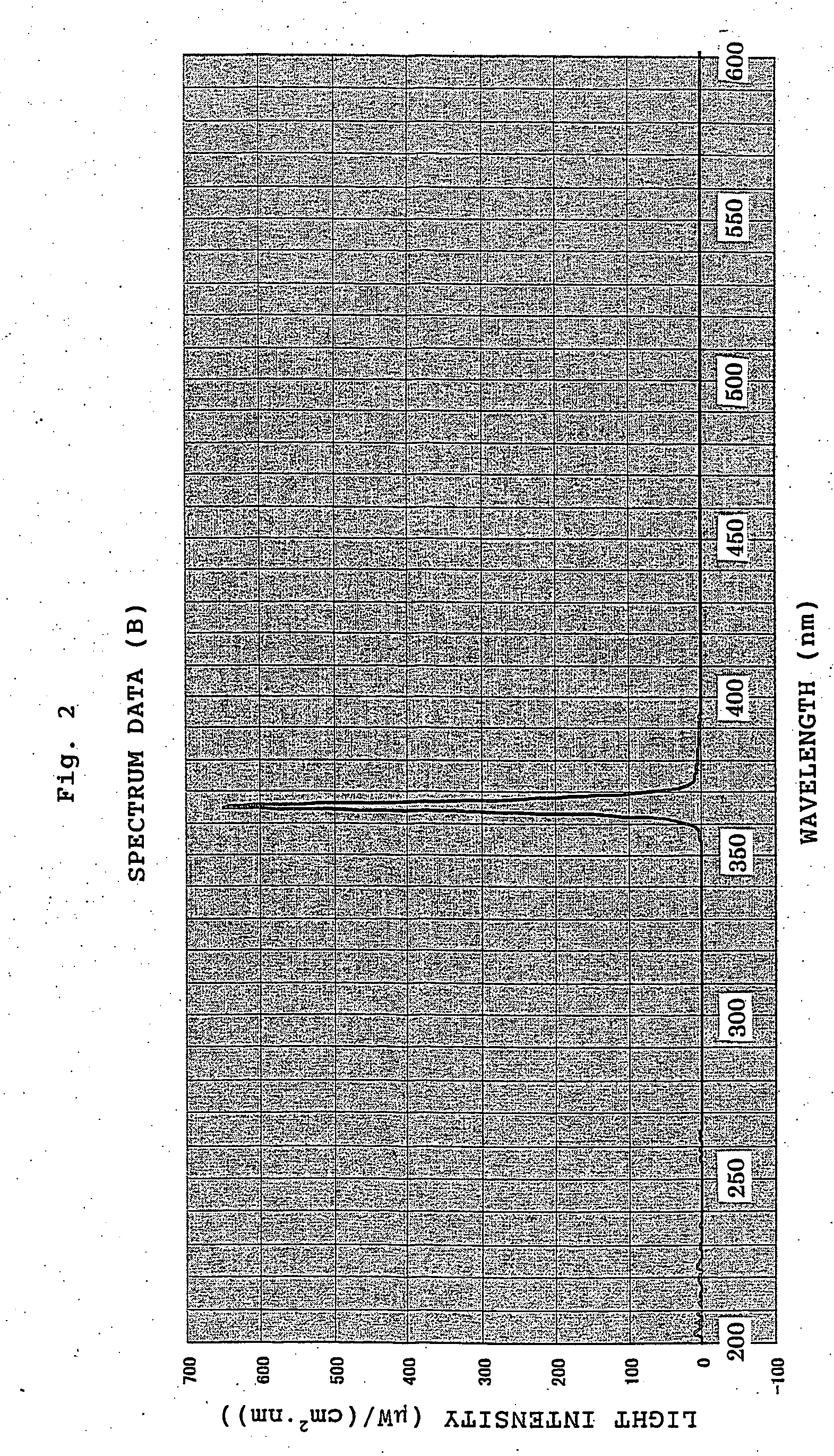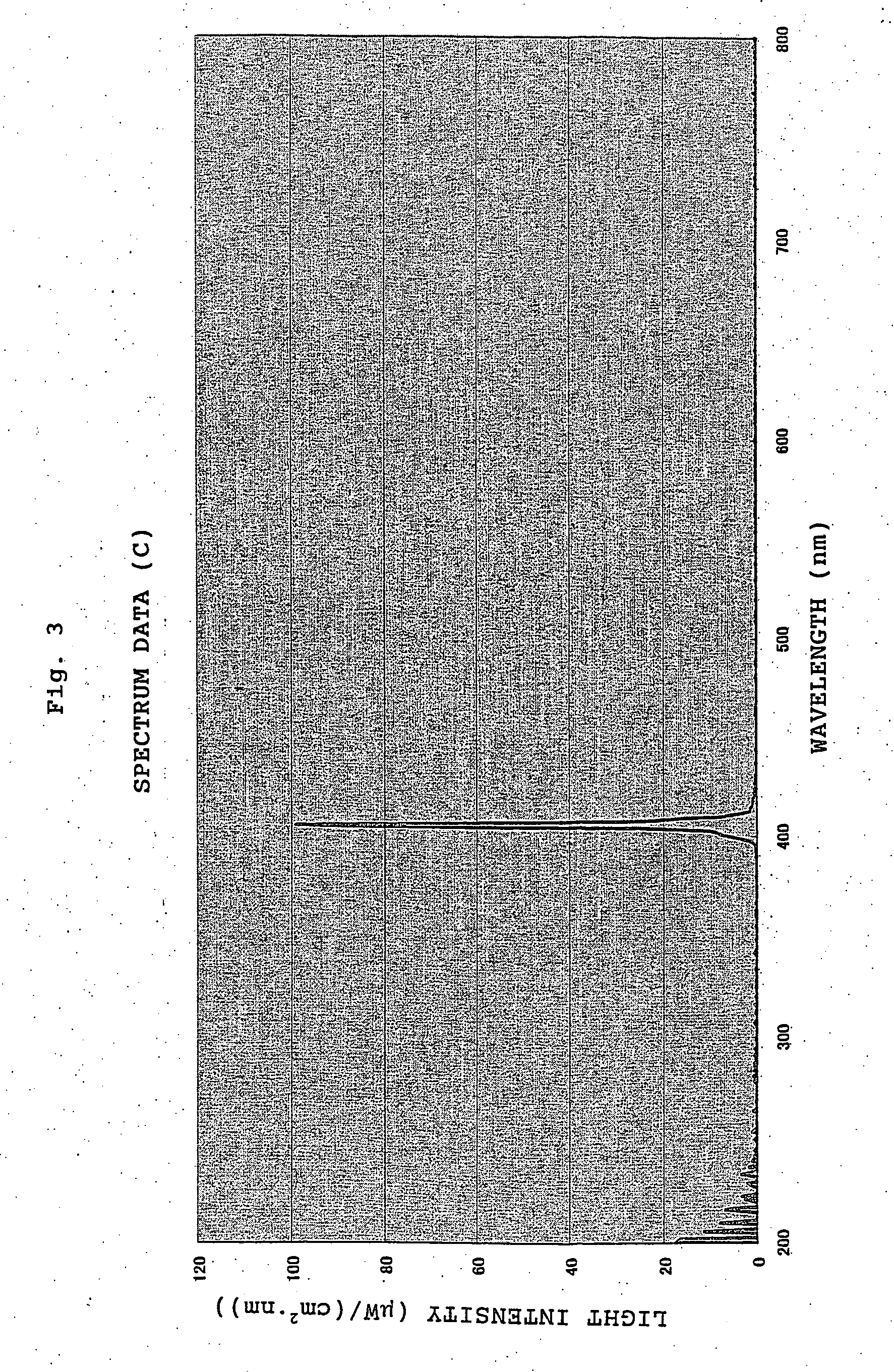Silane polymer and method for forming silicon film
a technology of silicon film and silane polymer, which is applied in the direction of synthetic resin layered products, liquid/solution decomposition chemical coatings, coatings, etc., can solve the problems of low use efficiency of raw materials, difficult control of film thickness, and difficult handling of raw materials, and achieves high molecular weight
- Summary
- Abstract
- Description
- Claims
- Application Information
AI Technical Summary
Benefits of technology
Problems solved by technology
Method used
Image
Examples
synthesis example 1
[0077] After the inside of a 3-liter four-neck flask equipped with a thermometer, a condenser, a dropping funnel and an agitator was substituted with an argon gas, 1 liter of dried tetrahydrofuran and 18.3 g of lithium metal were added, and the contents of the flask were bubbled with an argon gas. While this suspension was agitated at 0° C., 333 g of diphenyl dichlorosilane was added through the dropping funnel. After completion of the dropping, the mixture was further agitated at room temperature for 12 hours until the lithium metal disappeared completely. The reaction mixture was poured into 5 liters of ice water to precipitate the reaction product. After the precipitate was separated by filtration and cleaned well with water, it was cleaned with cyclohexane, vacuum-dried and recrystallized with ethyl acetate to obtain 150 g of white solid.
[0078] 150 g of the obtained white solid and 500 ml of dried cyclohexane were charged into a 1-liter flask, 20 g of aluminum chloride was adde...
example 1
[0079] In a nitrogen gas stream (oxygen concentration: 3 ppm or lower), 1 ml of cyclopentasilane was charged into a sample tube made of quartz, agitated, and exposed to lights emitted from a 200-W mercury xenon lamp (EXECURE 3000 of HOYA Candeo Optronics Co., Ltd.) and an ultraviolet lamp (EF-140C / J of Spectronics Co., Ltd.). Light having a wavelength of 254 nm was irradiated at 0 cm from the light source and with a lamp output of 100%, and lights having other wavelengths were irradiated at a distance of 1 cm from the light source and with a lamp output of 20%. The experiment was carried out by adjusting the light exposure by use of a light intensity adjusting device provided in the apparatus and by extracting light of each wavelength by use of bandpass filters.
[0080] Light intensities at the wavelengths of lights used in this experiment are shown in the following Table 1. The light intensity is a value converted from a spectrum measured by use of “spectroradiometer USR-40D” (produ...
example 2
[0091] The above prepared samples Nos. 3, 4, 5, 6 and 9 were GC(-MS) analyzed for components dissolved in toluene by use of GC. The GC column used in the measurement was BPX-5. The injection temperature used in the measurement was 200° C. The column was heated to 200° C. at 10° C. / min from an initial temperature of 50° C. and then kept at 200° C. for 5 minutes. Photographs showing peaks at 5-fold magnification are shown in the middles of the charts in FIGS. 6 to 10.
[0092] Referring to FIG. 6, it is seen that components were produced complicatedly in the sample solution exposed to a wavelength of 365 nm for 10 minutes. Referring to FIG. 10, it is seen that components other than cyclopentasilane (Si5H10) and toluene which were raw materials were produced in very small amounts in the sample exposed to a wavelength of 436 nm for 20 minutes.
[0093] Meanwhile, referring to FIGS. 7, 8 and 9, several components (three components) could be identified in the samples exposed to 405 nm for 10 ...
PUM
| Property | Measurement | Unit |
|---|---|---|
| Time | aaaaa | aaaaa |
| Digital information | aaaaa | aaaaa |
| Digital information | aaaaa | aaaaa |
Abstract
Description
Claims
Application Information
 Login to View More
Login to View More - R&D
- Intellectual Property
- Life Sciences
- Materials
- Tech Scout
- Unparalleled Data Quality
- Higher Quality Content
- 60% Fewer Hallucinations
Browse by: Latest US Patents, China's latest patents, Technical Efficacy Thesaurus, Application Domain, Technology Topic, Popular Technical Reports.
© 2025 PatSnap. All rights reserved.Legal|Privacy policy|Modern Slavery Act Transparency Statement|Sitemap|About US| Contact US: help@patsnap.com



